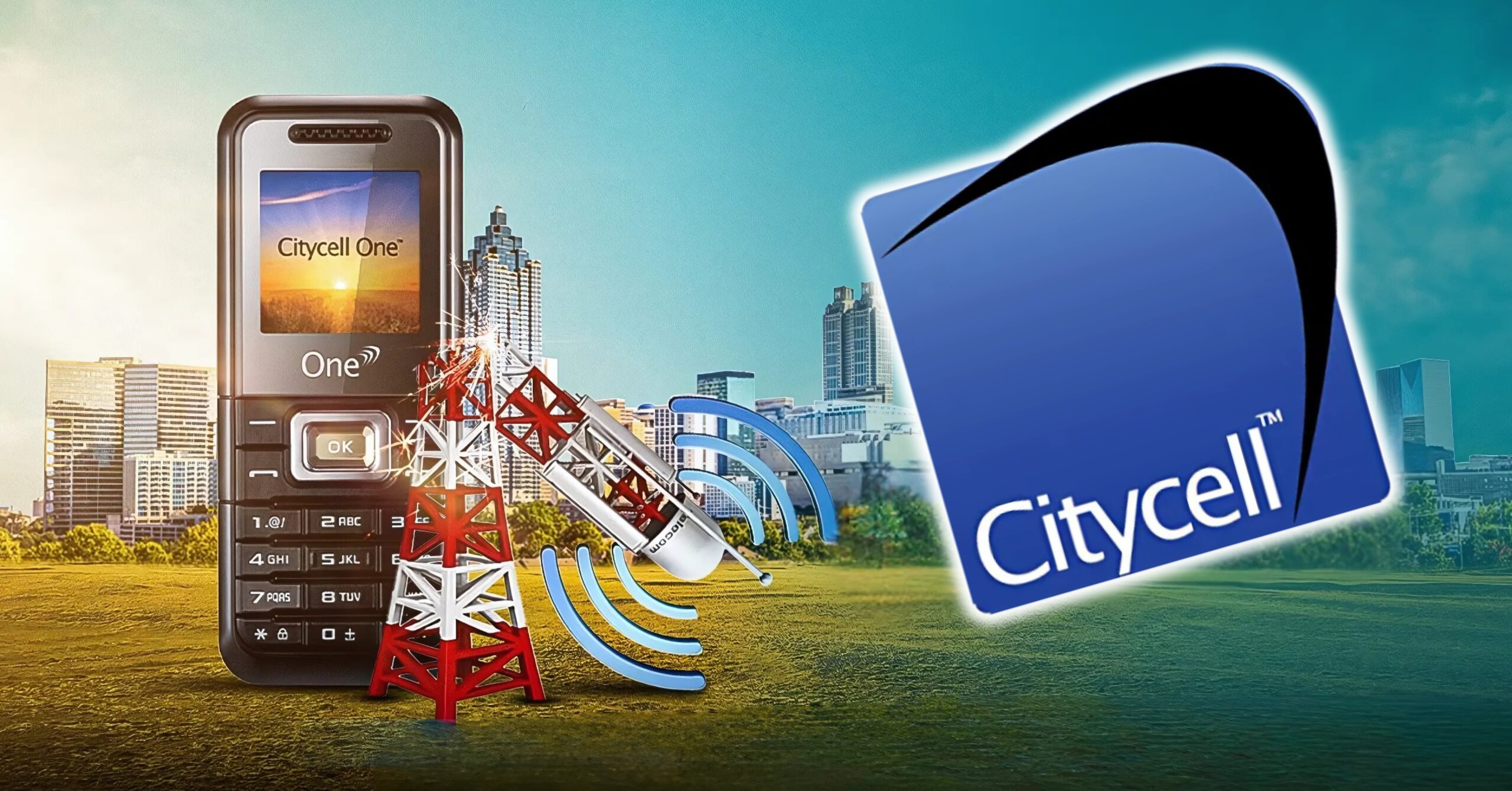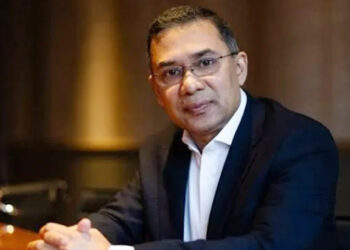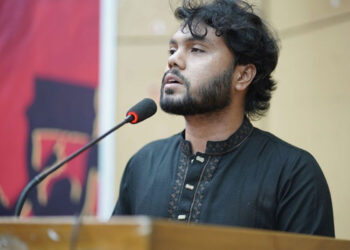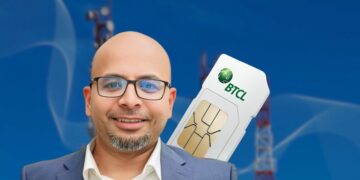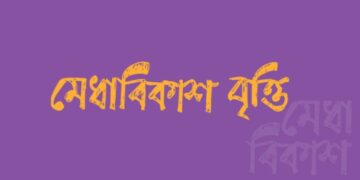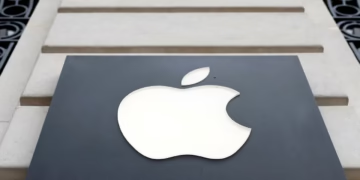Introduction
The distinction of the first mobile telecommunications company in Bangladesh is “Citycell”, Pacific Bangladesh Telecom Limited. This marks its significant contribution to the nation’s entry into the era of mobile communication. In our country, the telecom sector where thrive with a wide range of providers Citycell remains a worse chapter in Bangladesh mobile communication history. More than just a telecommunications entity, Citycell, operating under the banner of Pacific Bangladesh Telecom Limited, stood as a sentinel, marking the nation’s inaugural foray into the realm of personal mobile connectivity. It was a pioneering venture, a bold stride into an uncharted territory of digital communication.
History
In 1989,as the journey was began that time Bangladesh Telecom Limited (BTL) secured a license for operating a era which is wireless communication networks. After that in 1990,HBTL (Hutchison Bangladesh Telecom Limited) and BTL (Bangladesh Telecom Limited) formed a joint venture and they jointly launched Bangladesh first mobile telecommunications company “Citycell.” HBTL began commercial operation in Dhaka using the AMPS mobile technology in 1993 and became the 2nd cellular operator in South Asia (after Sri Lanka’s Celltell, established on 1989). Later that year Pacific Motors bought 50% of BTL. By in 1995 HBTL was renamed as Pacific Bangladesh Telecom Limited (PBTL) and launched the brand name ‘Citycell Digital’ to market its cellular products.
End of the era, 2007 Citycell had refurbished its old brand identity and introduced a new logo and corporate identity; the new logo is very reminiscent of the old logo. However, the slogan “Because We Care” has remained unchanged.
The Bangladesh Telecommunication Regulatory Commission suspended the spectrum allocation of Citycell, on 20 October 2016, after evaluation of the company’s number of dues. But on 3 November 2016, the Supreme Court of Bangladesh directed the BTRC to reinstate its spectrum and on 6 November 2016, BTRC returned the suspended spectrum to Citycell.
•Founder of Citycell
M.Morshed Khan who was the former BNP leader and former foreign minister,is identified as the founder chairman of Pacific Bangladesh Telecom Limited (PBTL) and Citycell.
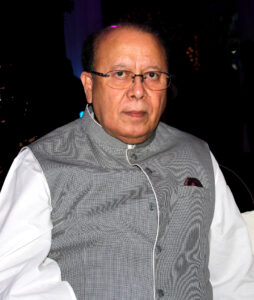
Features
When Citycell launched they provide both prepaid and postpaid plans. As technology upgraded day by day they also start to upgrade their company and they launched CDMA (Code Division Multiple Access) technology, upgrade SIM (Subscriber Identity Module) instead of R-UIM (Removable User Identity Module).
Early features
•Prepaid
Citycell previously offered nine different prepaid plans. Citycell started offering prepaid plans from 2003. It was the first to offer a prepaid plan with BTTB connectivity in the same year. In 2005, it launched the Aalap Call Me plan – the first phone plan with negative tariff in the country. In the plan, customers received credit towards their balance after they received calls from other Citycell subscribers. In the same year, Citycell launched Aalap Super plan. Subscribers of this plan could make free calls to other Citycell subscribers during late night hours. This espoused numerous copycat products from its competitors.
Later that year the regulator, BTRC, ordered all phone companies to cease free call facility offerings. In 2006, Citycell launched Hello 0123 plan. The name 0123 signified tariff of Tk 0 for calls to one Citycell number of the subscriber’s choice, Tk 1 for calls to two other Citycell numbers, Tk 2 for calls to all other Citycell numbers and Tk 3 for calls to all other networks. This plan was followed up with a string of other spinoff plans that continued into 2007.
•Postpaid
The postpaid plan was branded as Citycell One. The Postpaid subscribers enjoy 4 FnF numbers to other operators, 30 sec pulse applicable for all outgoing, Zoom Data service etc. in additional. Besides, two newly launched postpaid plans are available. In Dhaka International Trade fair 2009, Citycell Introduced a postpaid service called VOICE-DATA plan with cheaper tariff voice call and SMS on any operator and BTTB (NWD) and 0.25 Tk/minute voice call and SMS on any Citycell Number.
•Data service
Zoom Ultra is a data plan where the customer receives an internet dongle to surf the web in the regions which Citycell provides coverage. Zoom came with either one of two MODEMs, Huawei EC321 or ZTE MG880+. Zoom Ultra utilizes EV-DO technology. ZTE AC782 or Tianjian E618 is the dongle given with Zoom Ultra. Huawei EC5321 router is also offered for Zoom Ultra service. Zoom Ultra provides download speeds up to 512 kbit/s. Citycell introduced various calling plans with unique tariff structures, including plans with free or discounted calls during specific hours or to designated numbers.
Latest Features
•CDMA Limitations
While CDMA was initially a distinguishing feature, it became a limitation as GSM became the dominant global standard. Limited handset availability, Hard to roaming, difficult to adjust with new technologies such as 3G and 4G, which was based on GSM(Global system for Mobile Communications), also they were straggling to manage financial sector.
Read More: Marcel: Pioneering Innovation in Bangladesh Electronics Industry
What Peak and population talk about
When discussing Citycell’s “peak” and its relationship to population, we’re essentially looking at its highest point of subscriber numbers and how that relates to the overall mobile phone market in Bangladesh at that time.
•Peak Subscriber Numbers
Early 2010 based on the report, Citycell it’s peak subscriber numbers and this number figures out around 3 million subscribers. But it’s need to notify that this peak occurred during a period of rapid growth in Bangladesh’s Mobile telecommunications sector. Citycell reported a Total revenue FY 2014-2015 was approximately BDT 1.39 billion (TK 139.77crore),which we can see in the graph. In 2016, the company’s annual turnover was BDT 2 billion (TK 200 crore).
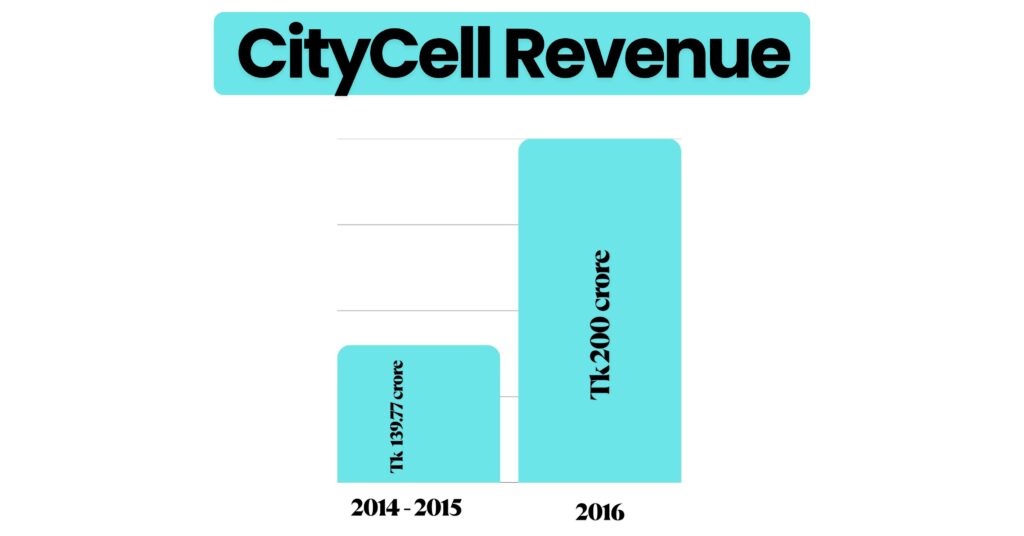
•Population Context
For understanding the necessity of these numbers, must envisage the overall population of Bangladesh and it’s growth of phone market. Rather 3 million subscribers might substantial and represented a small market share by compared the rapidly expanding GSM network.
According to a report, in 2010 the subscribers number was approximately 2.3 million. Next year 2011 this number was decreasing which we can observe from the graph and the number was around 1.9 to 2 million subscribers. After 4 years, the number was declined to 500,000. But next year in June 2016 this number was rise and the number was approximately 700,000. As same year in August this number again declined to 142,000.
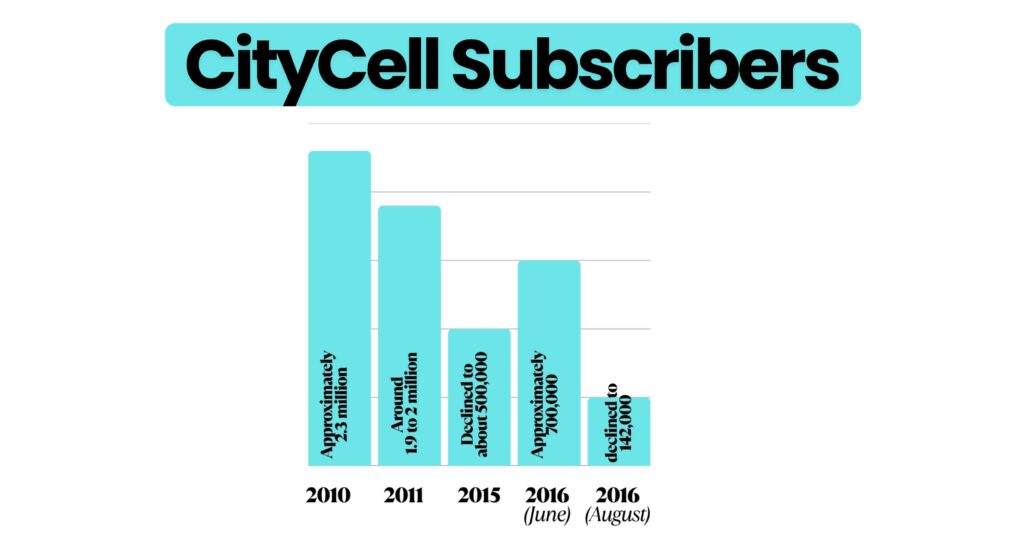
Why Citycell started to decline
From 1990 to early 2000,this company provide excellent services. But as days goes technology upgrade and many new companies began their journeys. Their decline was really a complex process because of processor, technology and many other sectors.
•CDMA Technology Limitations
While CDMA was a pioneering technology, its limited global adoption compared to GSM created significant challenges.
This resulted in:
•Restricted handset availability: Consumers had fewer choices in devices.
•Roaming difficulties: International roaming was less seamless than with GSM.
•Technological adaptation: The transition to 3G and 4G, primarily based on GSM, proved difficult.
•Intense GSM Competition
The rapid expansion of GSM networks in Bangladesh created fierce competition. GSM operators offered, Wider handset choices, More attractive pricing plans, Aggressive marketing strategies.
This made it increasingly difficult for Citycell to retain and attract subscribers.
As a company, they have many type of lacking which were the main reasons behind their decline, such as financial difficulties, regulatory issues, technological lag, and the main thing they hadn’t management capabilities.
Read More: Banglalink appointed New Foreign CEO effective april 2025
Impacts on Bangladesh’s Telecom Industry
This companies collapse was not only a companies decease but also a seismic event which remade the Bangladesh’s telecommunications industry and leaving a complex tapestry of consequences.
Firstly, the BTRC’s firm, unwavering stance, lots of unpaid dues and they hadn’t licensing breaches. This wasn’t only about money but also to asset authority and ensuring the integrity. This might be a clear message for other companies and a leaning segments.
Secondly, This company struggling with technical obsolescence which become a brutal, public demonstration of the Darwinian nature of the telecom world. They couldn’t adjust with new upcoming upgrades such as smoothly transition from CDMA to GSM-based 3G and 4G networks which was a death knell.
Thirdly, after this company shut down, it effected other rising telecom companies. The playing field titled was further in favor of the GSM and these potentially benefited in the terms of development, raised concerns about a potential reduction.
Investor confidence, a fragile and significant element which was the notable hit. And finally, Citycell’s downfall criticize the paramount significant of customers experience. Citycell exist wasn’t just a business downfall but it was a watershed moment which forced a collective reassessment of the industry. This highlighted for others companies such as regulatory compliance, technological issues, competitive balance and also manage ability.
Shutdown and Aftermath
On October 20,2016 the BTRC suspended Citycell’s spectrum allocation. Before time BTRC ( Bangladesh Telecommunications Regulatory Commission) took action against this company. After October 2023,it’s regulatory body officially cancelled it’s 2G license.
Aspects of The Shutdown
•Regulatory Enforcement
Due to Citycell’s fail failure for paying substantial outstanding dues by BTRC. The telecommunications sector highlighted the BTRC’s commitment to enforcing regulatory compliance.
•Financial Fallout
Financial difficulties were a major factor behind it’s shutdown. It was company’s inability to settle it’s debts led to legal battles.
•Disruption service and Impact on employee
An important termination of shutdown was loss of jobs for the employees and created financial hardship. In the disruption of mobile service for Citycell’s remaining subscription base, causing inconvenience and impacting communication.
Aftermath
•Legal proceeding and industry reflection
Citycell and BTRC have continued legal disputes by ongoing efforts to resolve economic issues. Recently they reported that Citycell attempting to regain. It has promoted reflection with the Bangladesh Telecommunications industry for financial stability, regulatory compliance and the need to adapt to technological advances.
•Potential reemergence and Long term effects
From recent reports, Citycell attempting to resign it’s operating license. It also shows that if it does reemerge then it will face many complications. All of these have had a long term effect on investors confidence within the Bangladeshi telecommunications market.
Conclusion
Citycell was Bangladesh’s first mobile telecommunications company. It’s journey was not only a triumph but also a tragedy. This company started as a visionary telecom provider which can be paved the pathway for mobile connectivity. However, it’s story can be stand as a symbol of serves as a cautionary tale for any industry.
Citycell will remain forever as a part of country’s telecom history, for Bangladeshis. This may highlighted as a symbol of innovation, connectivity and hope. For a brief moment, at the forefront of a new era in communication networks this may stay forever in history. Rather, Citycell may not exist in market today but it influence on telecom industry of Bangladesh and create a shape in mobile communication.
Reference
The Daily Star
Wikipedia
bdnews24.com
Daily Sun
Business Inspection BD
Share via:

